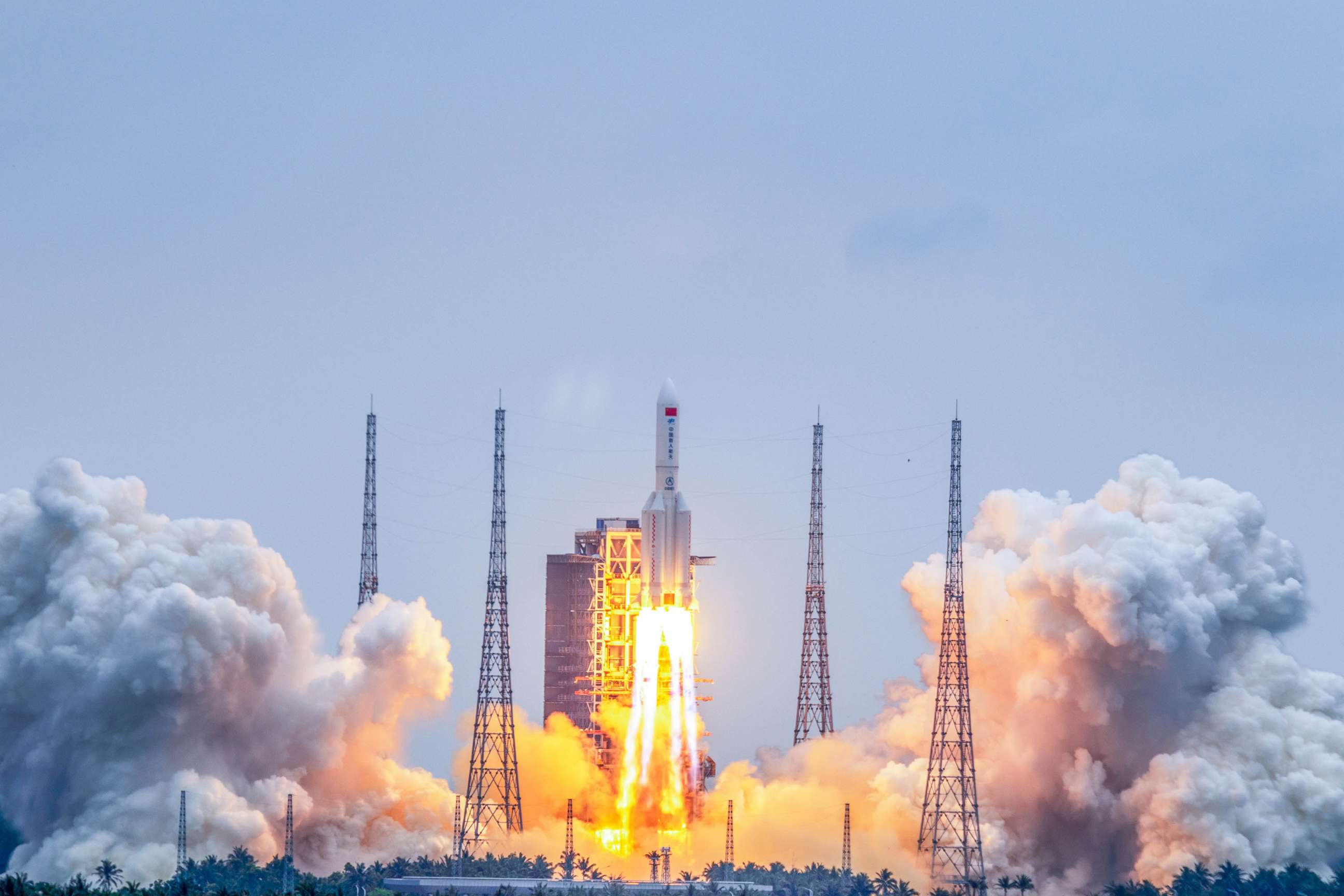Chinese rocket updates: Debris splashes down in Indian Ocean
The massive rocket came down at about 10:30 p.m. ET.
Latest update, 12:36 a.m.: The rocket has reentered Earth's atmosphere and fell into the Indian ocean north of the Maldives at latitude 22.2, longitude 50.0, according to an update from Space-Track.
Latest update, 11:45 p.m.: The rocket has reentered Earth's atmosphere, according to U.S. Space Command, which has been providing updates via Space-Track.
The Space Command said it believes the rocket splashed down in the Indian Ocean, but was waiting for official confirmation from 18 Space Control Squadron.
The official China Aerospace Science and Technology Corporation, meanwhile, said on Weibo it had reentered the Earth's atmosphere at 10:24 p.m. ET and provided coordinates: around 72.47° east longitude and 2.65° north latitude. Those coordinates would put it in the northern Indian Ocean, near the Maldives.
It said most of the rocket debris was "ablated and destroyed" during reentry.
Update, 8:24 p.m.: The reentry window has shifted to between 9:11 and 11:11 p.m. ET. Saturday, with the projected landing now in the Mediterranean Basin.
Update, 5:03 p.m. The latest data from the U.S. Space Force has narrowed the reentry window for the rocket body to just two hours: 9 to 11 p.m. ET.
Computer projections show that if the debris were to reenter the atmosphere at exactly 10:04 p.m. ET on Saturday, it likely would be over the northern Atlantic Ocean, though the location varies minute to minute.
Space Force won't know the precise landing location until after the rocket body has already landed, according to Space Track.
Original story:
Predictions for when and where Chinese rocket debris hurtling toward Earth is expected to land are narrowing.
The section is part of a rocket called Chinese Long March 5B, which launched a module of the country's first permanent space station into orbit last week.
Officials have been tracking the rocket body's uncontrolled return to Earth for several days now, estimating when it might reenter the atmosphere.
The rocket body's reentry is currently projected at anywhere between 7:30 p.m. ET and 1:30 a.m. ET, according to the latest U.S. Space Force data.
The U.S. Space Force has projected four possible orbits for reentry in play -- three over water, one over land.
Potential landings over land are subject to change, but currently include the Southeastern U.S., Mexico, Central America, the Caribbean, Peru, Ecuador, Colombia, Venezuela, parts of Southern Europe, much of Northern and Central Africa, the Middle East, Southern India and Australia.
Since the rocket section is moving at 18,000 mph, experts won't be able to estimate a reentry location until a few hours before it happens.
People can follow the latest reentry time estimates at Space Track, which is working with the U.S. Space Force on tracking the debris.
The massive rocket body measures 98 feet long and 16.5 feet wide and weighs 21 metric tons, according to the Aerospace Corporation, a nonprofit that performs technical analyses and assessments for a variety of government, civil and commercial customers.

Instead of falling downrange during the launch, the empty rocket body reached orbital velocity, which placed it "in an elliptical orbit around Earth where it is being dragged toward an uncontrolled reentry," the corporation explained in a blog post.
This is a developing story. Please check back for updates.




